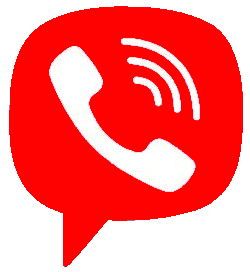From laser skin resurfacing to surgical and non-surgical hair loss solutions, Medical Tourism Vietnam recommends the best cosmetic treatments and procedures to try in your mid-thirties to forties.
When should you start getting Botox? Is it time to incorporate retinol into my skincare routine? What is a “mummy makeover or a daddy do over”? Should you really sacrifice your derrière for your le visage? Should I swap my hyaluronic acid fillers for something a bit more permanent?
When it comes to beauty and aesthetics, we can assure you that there is no such thing as one size fits all. But there are some tried and true principles that will keep you looking and feeling your best. In this article we advise you on the best treatments, procedures, and practices — from surgery and skincare and everything in between — to consider at any age.
The decade ahead looks better than ever, and there are a growing number of non-surgical cosmetic procedures that can address visible signs of aging like fine lines and wrinkles, hyperpigmentation, skin laxity, and thinning hair. By taking a proactive approach to skin health and maintenance, patients can delay (or potentially even avoid) more invasive surgical procedures down the line.
Skin laxity

Hyperpigmentation or Melasma

For le visage (The Face)
Neurotoxin Injections If you didn’t start getting Botox®, Dysport®, Jeuveau®, or Xeomin® in your twenties and thirties, it is not too late! According to the American Society of Plastic Surgeons 2018 Statistics Report, Botox® (and its competitors) is the most popular cosmetic treatment for people in their forties.
Hanoi based certified Cosmetic Surgeon and dermatologist Dr.Quoc Anh Phan, says that he has plenty of patients who do not start regular Botox® treatments until their forties and fifties, and they do so for a variety of reasons. “Everyone is different,” he says. “Some people are frowners, some people are squinters. Some people have had severe damage to their skin others have taken really good care of their skin and do not have much damage — even in their forties and fifties.” While the muscle-paralyzing agent is used to help prevent the formation of wrinkles during the twenties and thirties, it can continue to have a smoothing and softening effect by inhibiting the muscle movement that causes lines and wrinkles. The injections take about a week to work and touch ups are required every three to six months for best results

Dermal Fillers Because the body’s collagen and elastin production decreases with age, men and women alike may begin to notice sagging, reduced elasticity, and less volume in the face, neck, and body. For women, the hormonal changes that accompany menopause can further impact this process.
In these cases, soft tissue fillers can be used on various parts of the body (though they are most commonly used on the face) to plump and smooth unwanted lines and wrinkles. “Patients in their forties start losing a little more volume in the cheek area and they start getting jowls around the chin area,” says Dr.Quoc Anh Phan. “In that age group, I think fillers around the cheek and jawline are hugely transformative.”

Courtesy: https://www.agelessandbeautiful.com
Like neurotoxin injections, the results are both fast and effective — but maintenance is needed every six months to two years depending on the type or filler and area being treated.
Uneven skin tone and texture is another complexion concern that increases with age (and the accompanying decrease in cell turnover). “By the time a patient is in their forties — depending on where they’ve grown up and what their lifestyle has been — signs of sun damage are usually present in the face. Brown spots called ‘solar lentigos’ and ‘mottled pigmentation’ are usually present,” says Dr.Quoc Anh Phan. “Also, due to the environment, the skin has lost some of its collagen and elastin and that’s were fine lines show up, a little bit of skin sagging shows up.”
Targeted fractional lasers, like Fraxel® have the ability to solve many concerns. Whether you opt for an ablative or non-ablative treatment, the energy from the laser targets damage while stimulating collagen production, resulting in a brighter, smoother, and tighter complexion.
“Fraxel® helps rejuvenate the skin in a number of ways. It takes care of the mottled pigmentation, gets rid of the brown spots, and it also helps rebuild collagen and elastin,” says Dr.Quoc Anh Phan. “So, depending on how much damage a person has, anywhere from one to three Fraxel® treatments would be recommended.”
While wounding ablative fractional lasers have the ability to remove thin layers of skin for stronger results, the treatment comes with a longer downtime than their non-wounding non-ablative counterparts. But it should be noted that non-ablative fractional laser can require anywhere from three to five sessions to see the brightening, toning, and evening effects.
Ultrasound Skin Tightening (a.k.a Ultherapy®)
For tightening and firming without a facelift, Ultherapy® is a non-invasive ultrasound-based cosmetic treatment that addresses skin laxity. It works by sending concentrated ultrasound waves deep into the skin and SMAS muscle. Unlike laser skin tightening methods, it targets the inner (not outer) layers of the skin. The ultrasound waves heat up the underlying tissue to activate the body’s healing response, which, in turn, stimulates collagen and elastin production.
“Patients in their forties have lost collagen and elastin, and there’s a little bit of skin sagging,” Dr. Quoc Anh Phan explains. On the face, Ultherapy® can tighten the jawline, under eyes, and forehead, while lifting the eyebrows. It can also be used to firm the skin of the décolleté and even the stomach.
While the procedure is more impactful than Botox® and fillers, it doesn’t quite reach facelift proportions. Like most laser treatments, it requires several treatments (spaced three to four weeks apart) and offers a solution for those looking for rejuvenation sans scalpel.

For the Hair and Body
Body Sculpting In case you haven’t picked up on it yet, many of the body’s natural responses and processes start to slow with age. The metabolism is not least among them. Coupled with the decrease in skin elasticity, patients in their forties may opt for surgical and non-surgical body contouring procedures that can remove unwanted fat deposits from most parts of the body (think: love handles, abdomen, buttocks, and thighs).
There are a number of treatments, at varying degrees of invasiveness, that fall under the ‘body sculpting’ umbrella. Non-surgical procedures like CoolSculpting®, SculpSure®, and UltraShape®, for example, eliminate excess fat by heating or freezing it. Newer options like EmSculpt®, meanwhile, offer toning and strengthening benefits by employing high-intensity, focused electromagnetic technology that mimics the effects of 20,000 crunches over the course of a 30-minute treatment.

These non-surgical treatments come with minimal downtime (especially when compared to a tummy tuck or liposuction), but three to four sessions will be needed to see results. While the effects are permanent and fully visible after about four to six months, they require patients to maintain their weight.
Courtesy: www.coastherapy.com/body-sculpting/
Hair Growth Treatments
For men in particular, hair growth can slow in the forties, leading to a receding hairline, hair thinning, and baldness. For patients with severe hair loss, hair transplant surgery is the most effective and most invasive solution. While there are several techniques (micro-grafting, slit grafting, punch grafting, etc.), each hair transplant method involves moving hair from another part of the body to the desired area.
The most effective non-surgical hair loss solution for men and women alike is platelet-rich plasma (a.k.a. PRP) injections. Similar to a vampire facial on the face, the process involves injecting a PRP solution composed of the patient’s own platelets (usually drawn from the arm) into the scalp and affected areas. The blood acts like fertilizer, promoting stronger and thicker hair growth. Each treatment lasts about a half hour and patients have monthly visits for the first six months before switching to a bi-monthly schedule.
Finally
Whether you’re dealing with skin laxity, hyperpigmentation, hair loss, or weight gain, there are an increasing number of minimally invasive cosmetic procedures to tighten, brighten, and rejuvenate the face and body for patients of all ages.
FOR THE VIETNAMESE WOMAN.
Rhinoplasty.
Rhinoplasty or in Asia, Asian rhinoplasty is a broad term that refers to a set of rhinoplasty techniques commonly used in Asian populations. Knowledge of these different techniques is essential to perform an adequate rhinoplasty in Asians. For Western patients, reduction rhinoplasty with dorsal hump rasping and lower lateral cartilage resection is classic. In contrast, silicone implant augmentation rhinoplasty is the most commonly used technique in Orientals. Polytetrafluoroethylene (Gore-Tex) and silicone implant augmentation are used, A new augmentation rhinoplasty with diced cartilage is also being researched.
Keywords: Augmentation, rhinoplasty, Asian, implant, diced cartilage, aesthetic surgery, Oriental

Breast Implants.
Teardrop breast implant?
It is a surgical method to create soft, natural and teardrop shape breasts using the teardrop breast implant closest to the breast shape. In particular, by combining the body shape, skin characteristics, and preference of the patient, the most appropriate surgical technique and the most harmonious and natural implant is selected to create the most beautiful breast line for the patient.
Features of teardrop breast implant

*Natural shape
*The teardrop breast implants minimize the splitting space inside the breast after surgery and maintain a natural teardrop shape.
*Various sizes and shapes
*Patient’s body shape, skin characteristics and preference to choose the most appropriate implant are taken into consideration.
Was this helpful?



